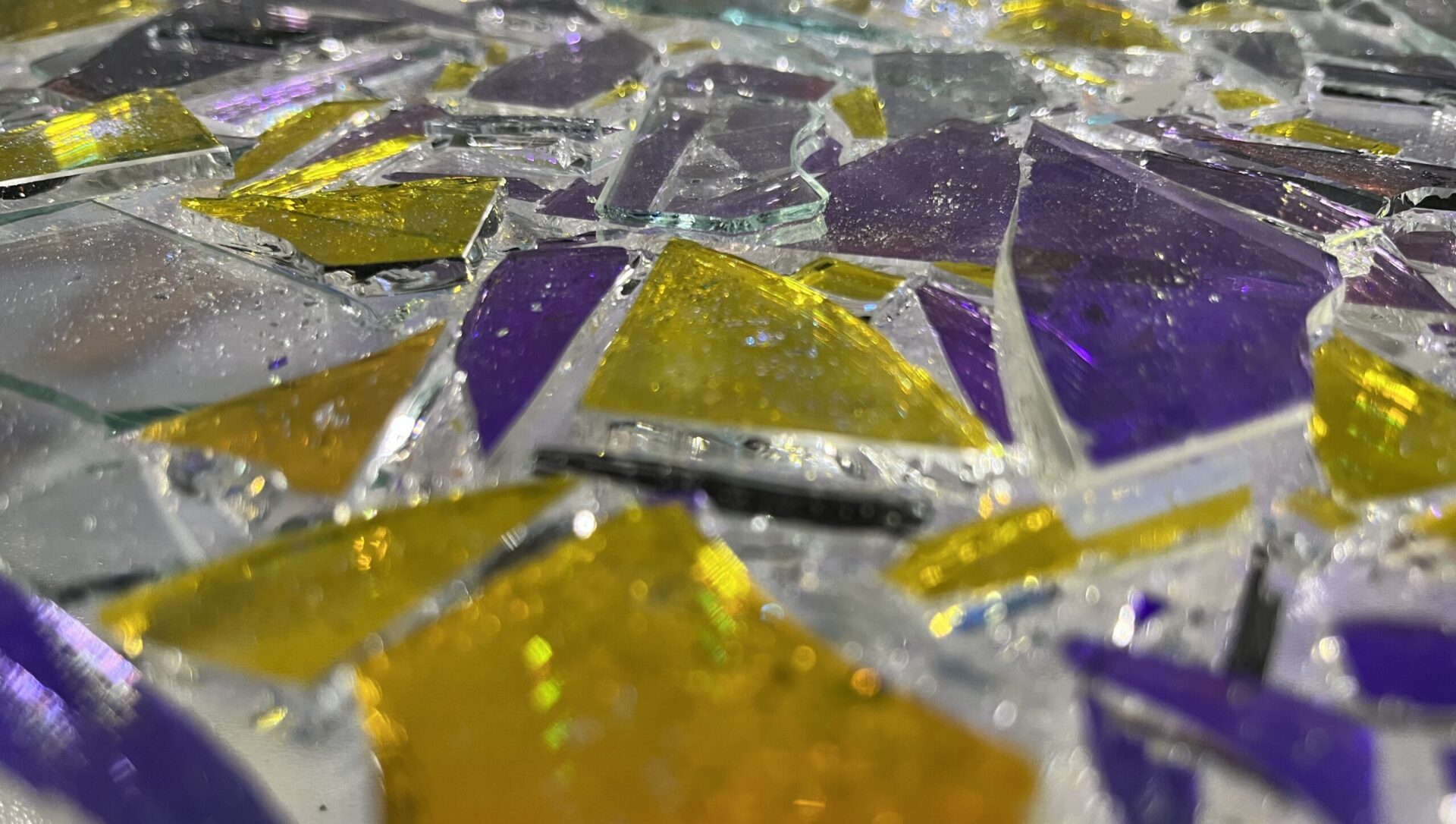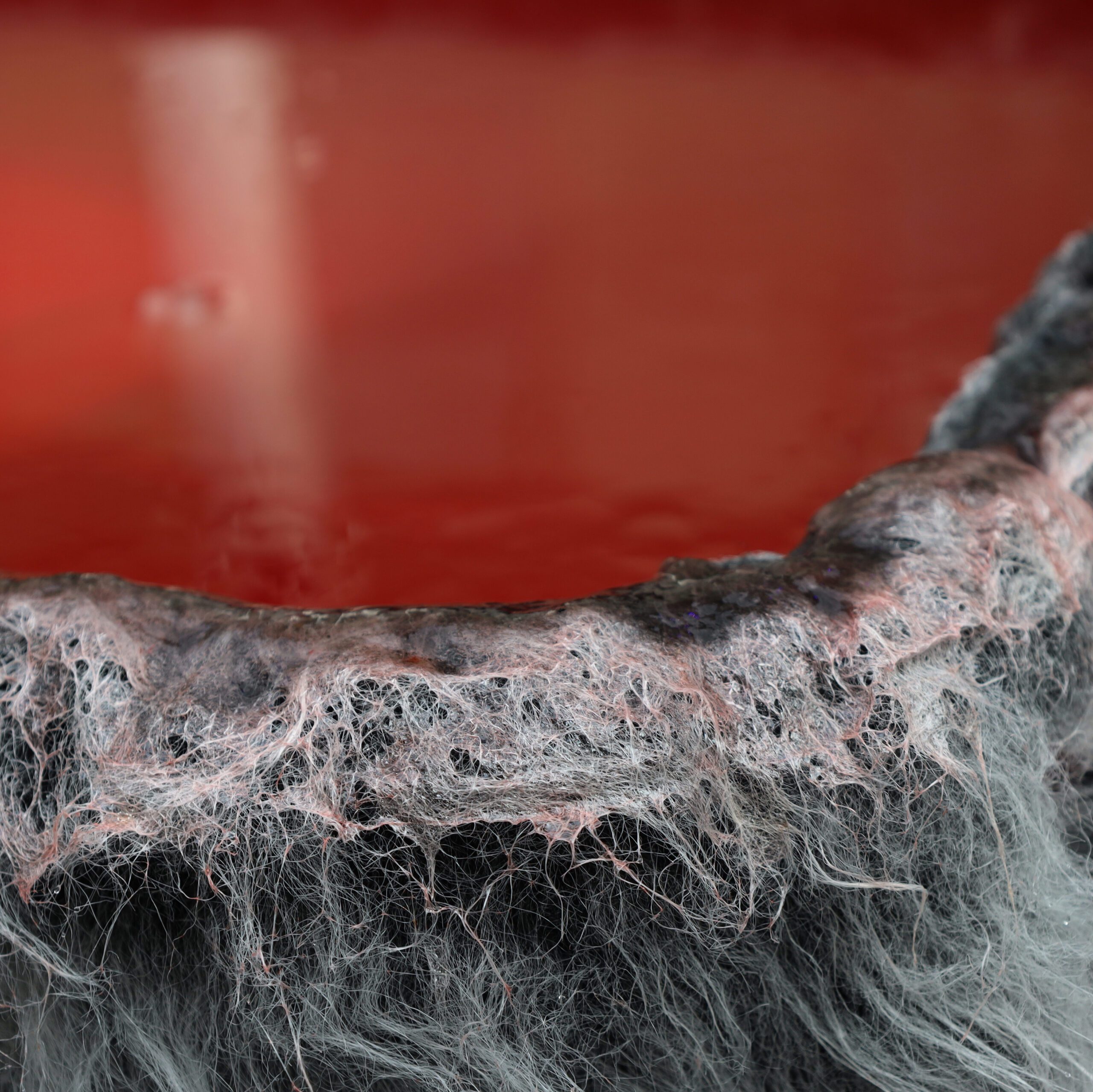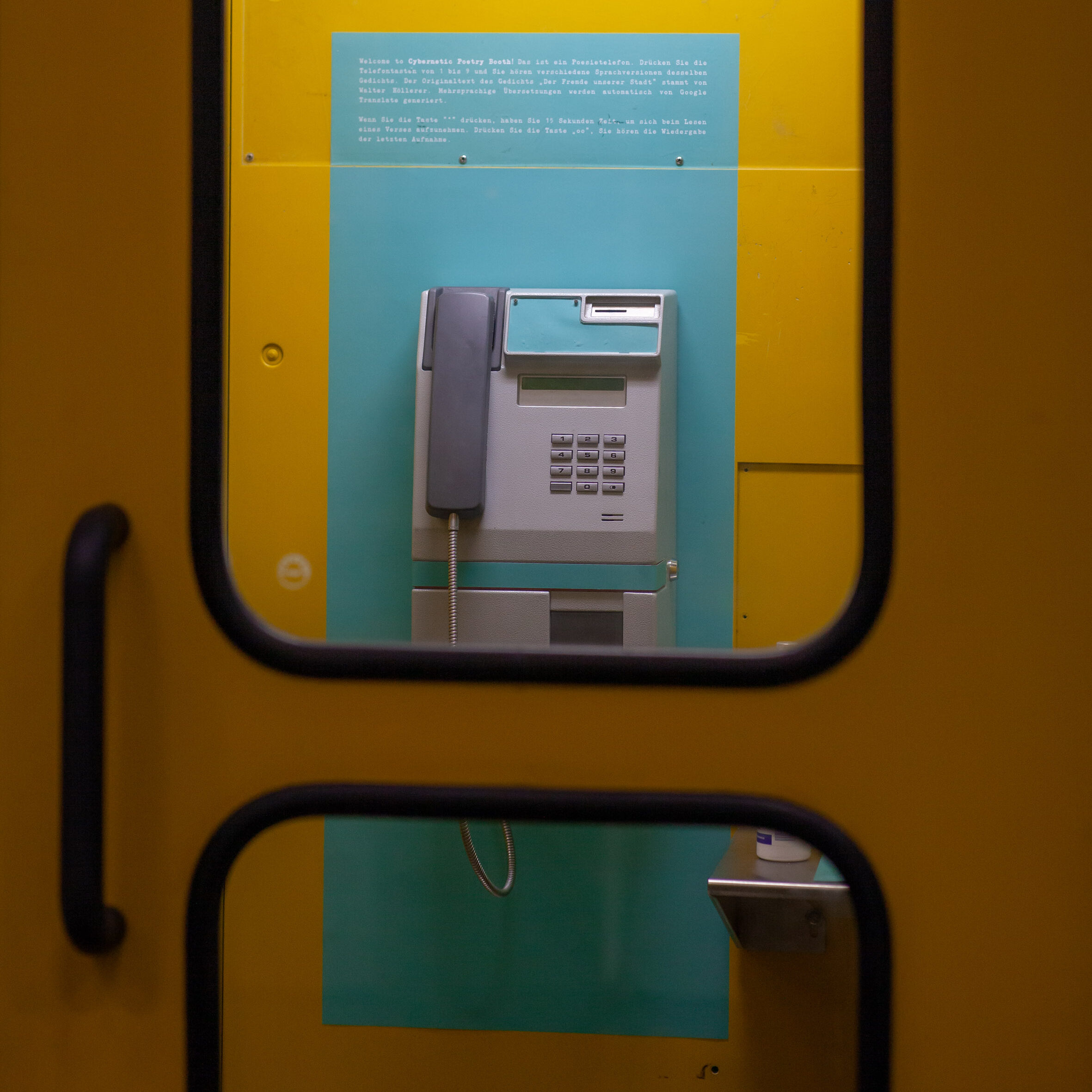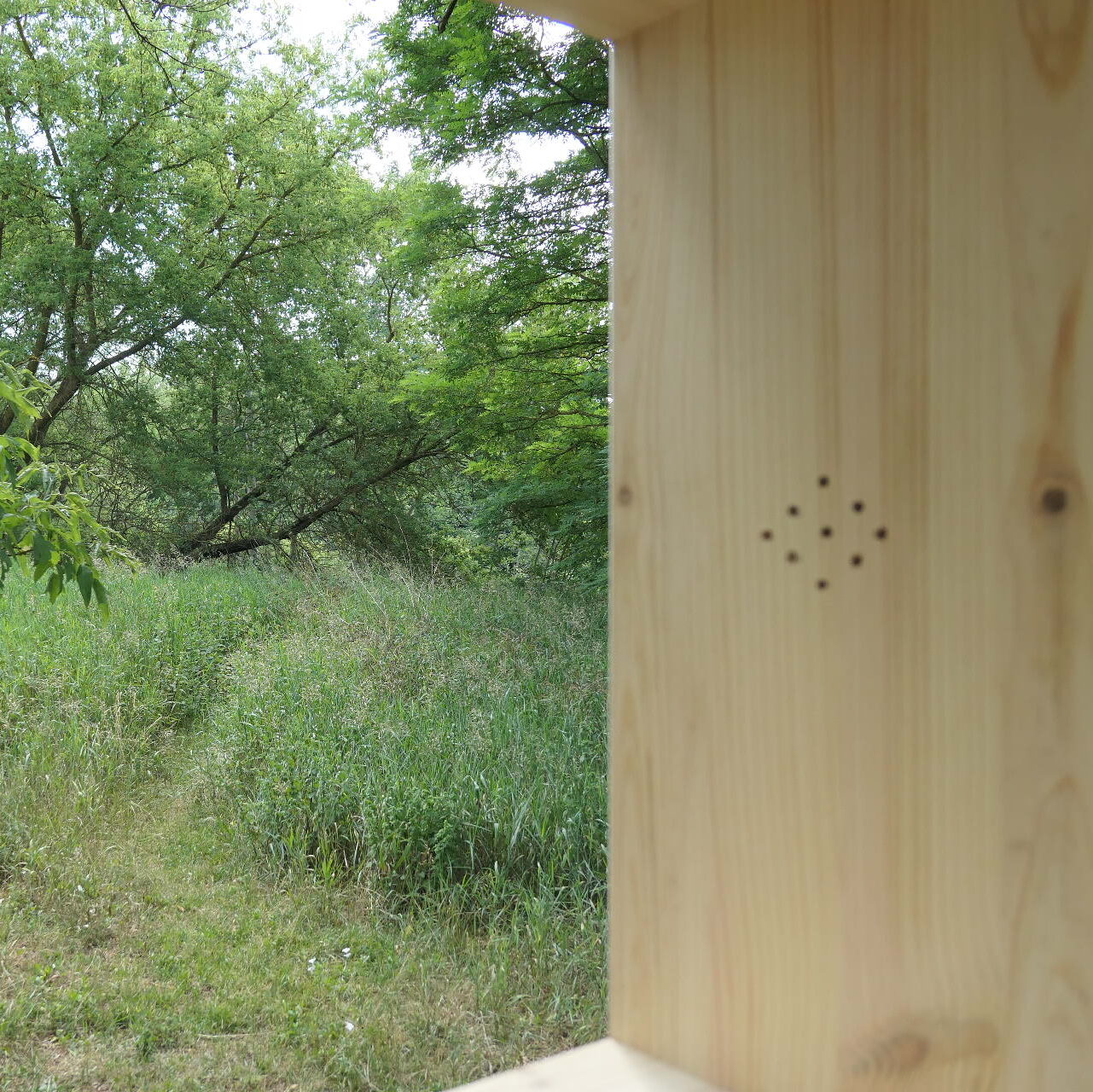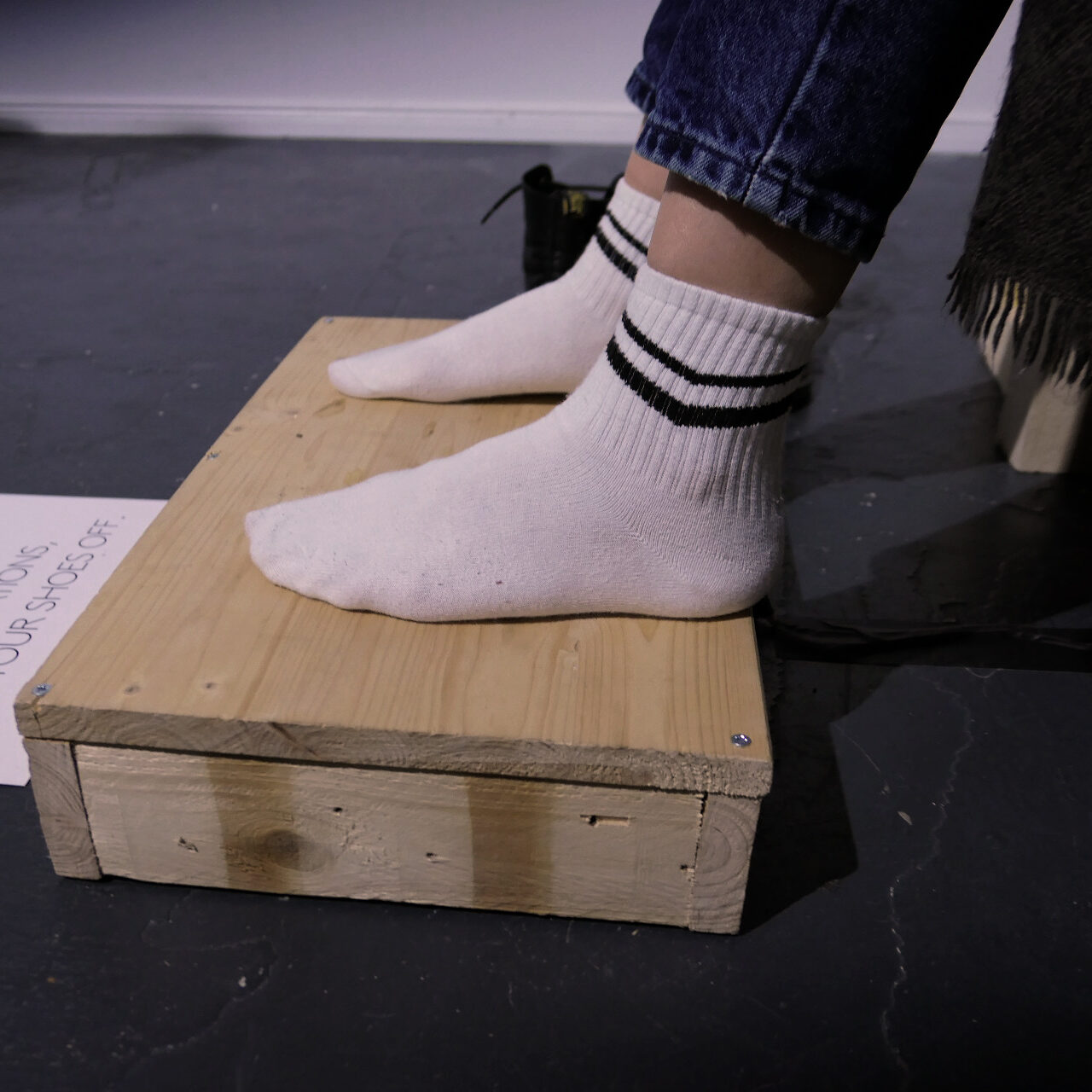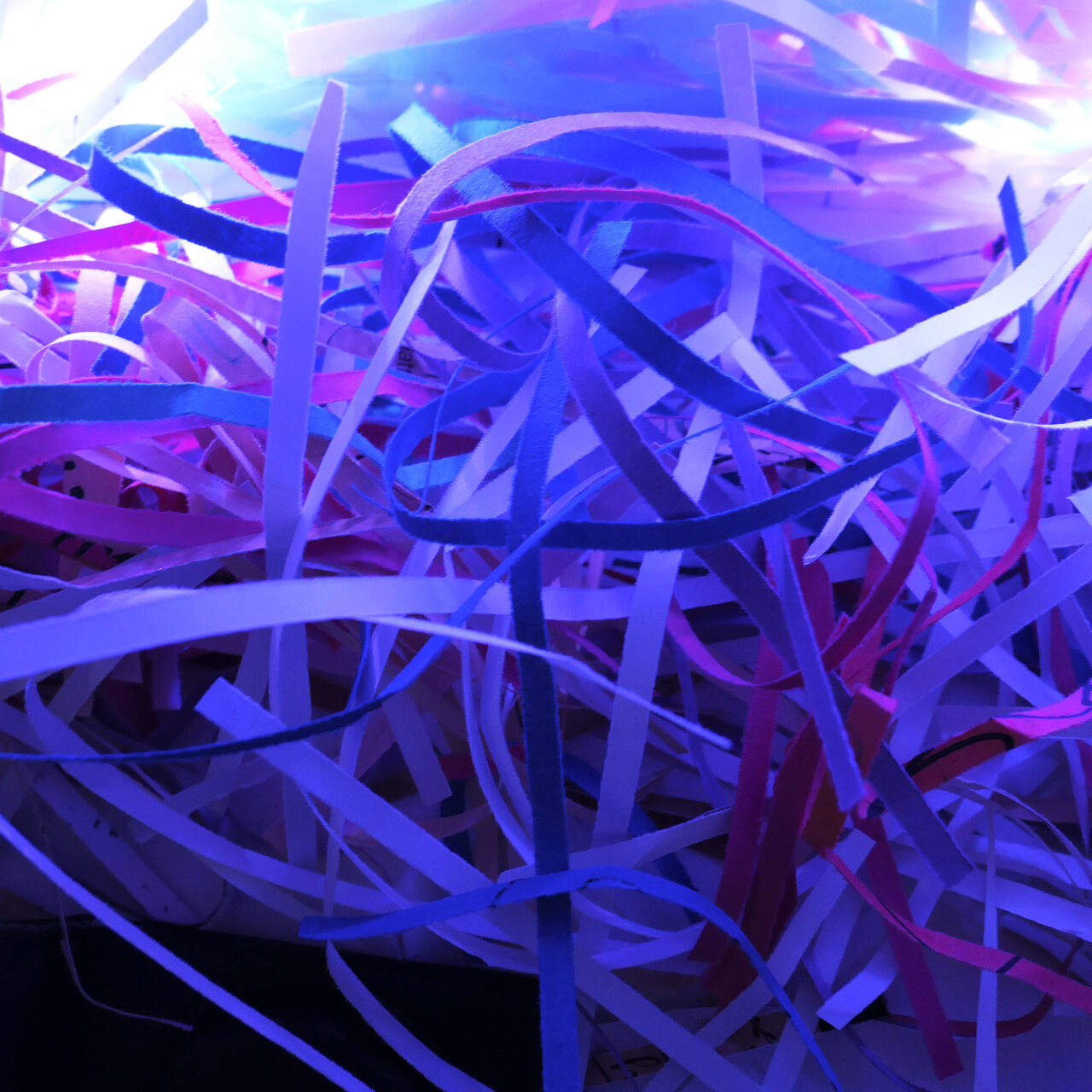Safe Space (2024)
Dystopian sound Installation, created in collaboration with Juliette Collas

Urban remodelling and gentrification redistribute bodies in space in the name of security and modernity. “Antisocial” behaviours are deterred often by light and sound systems, such as high pitch tones to ban younger bodies or blue color lights to discourage drug usage.
Installed in the depths of the Kunsthaus parking space, Safe Space questions the (im)possibilities to define such a concept. Created as a sound installation for the Dystopia Festival 2024 , it explores the tensions between comfort, safety and autonomy. How do our bodies encounter the city? Where and who can find shelter in the cracks?


The installation is composed of 8 lights, 8 loudspeakers and 3 ultrasound sensors placed in a grid and steered by microcontrollers. The audience by walking under the grid, can trigger and change the installation’s behaviour.
The passive state, known as the bliss state, occurs when none of the sensors are activated. In this state, a harmonious choir fills the space with resonant tones and bright, randomized light, creating the illusion of serenity and balance. However, this calm facade is artificial—fragile and resistant to disruption, it leaves no room for dissonant voices or hidden corners.
In contrast, the active state, or shadow state, is triggered when one or more sensors are activated. Here, the choir’s sounds loop back, distorting into an endless feedback cycle as the lights extinguish, casting the space into ambiguity and unpredictability. This environment, while darker and dissonant, can offer an alternative form of safe space—one that embraces contradiction, darkness, and autonomy.
Accusation in a Mirror (2024)
Dangerous Vibrations
Accusation in a Mirror (AiM) is the act of accusing an enemy of the very crimes or intentions that the accuser is planning, a method that creates justification for preemptive violence and manipulates public perception. Used in genocides such as the Holocaust and Rwanda, it weaponizes language, transforming rhetoric into a tool of destruction. In legal terms, AiM plays a key role in demonstrating intent, or dolus specialis, an essential element of genocide under the Genocide Convention. By publicly accusing victims of being a threat, perpetrators both inflame public sentiment and justify their actions. AiM is not just rhetoric—it is a deliberate step toward atrocity.




AiM as a multichannel sound installation is a research project created for Rundgang 2024. The installation features transducers mounted on a wooden structure, which play back rhythmic, processed recordings of historical hate speeches. The sound echoes like a machine gun, with words transformed into a relentless, mechanical rhythm of violence. The wooden structure integrates dichroic glass, which shifts color depending on the angle of view, symbolizing the distortion of truth and the changing perspectives that propaganda can create.
The glass surfaces vibrate in response to sound, causing shards to fall on the floor over time and gradually crossing the boundaries of the sculpture. Over time, the broken glass transforms the space into a hazardous zone and echo the real-world consequences of weaponized language. Visitors are invited to move through the installation carefully, encountering both the reflective surfaces of the structure and the fractured, broken glass beneath their feet. The rhythmic sound, paired with the physical fragility and transformation of the space, creates an environment where the dangers of propaganda are rendered immediate and unavoidable.
Secretion (2023)
Singing fountain of bodily fluids.
Can it be that in the West, in our time, the female body (sigh) has been constructed not only as a lack or absence but with more complexity, as a leaking, uncontrollable, seeping liquid; as formless flow; as viscosity, entrapping, secreting; as lacking not so much or simply the phallus but self-containment—not a cracked or porous vessel, like a leaking ship, but a formlessness that engulfs all form, a disorder that threatens all order?
Grosz, E. Volatile Bodies : toward a Corporeal Feminism. Bloomington (Indiana University Press, 1994), 203.

Mixing fluid choreography, haptics and multichannel composition, Secretion is a sound installation taking the form of a slime fountain. Inspired by the baroque water features of the 18th century in Versailles, it proposes a reflection on our relation to menstrual bloods and body fluids. Away from flamboyant representations of Man’s power on nature, it tackles menstruation with a materialistic and genderless approach.

The abject and monstrous present in us to become unavoidable and fascinating when erupting in the room. Visitors are compelled to drift away from the usual anthropological connotations of menstrual blood and embrace it all: sounds, smells, texture…
A watery body sloshes and leaks, excretes and perspires. Its depths gurgle, erupt. A body of water also extends, transcorporeally, into other assemblages: watershed, cistern, sea; and other bodies that are human, vegetable, animal, and hydrogeological.
Inspired by the ideas of Astrida Neimanis, Secretion addresses the intertwinement of our own biological waters with all planetary fluids. De-centering ourselves as human, we could embrace our raw materiality as part of an entire ecosystem. The slime, composed of sodium alginate – a natural brown seaweed extract – is subject to osmosis, becoming stickier and darker with time. While Neimanis wrote her book before the Covid-19 Pandemic, we can only witness how accurate her idea of the porosity of our organisms as a link to all others entities and environment.
These varied speeds and slownesses, multiple movements, and diverse incorporations of ‘water’ belie the difficulty of speaking of water in the abstract – as though it were one undifferentiated and amorphous thing, the same everywhere and all the time. But, undeniably, this is all water. We are all bodies of water. In fact, paying attention to hydrological cycles presents a rather queer notion: water is evidently both finite and inexhaustible; both the same and always becoming different, too.
Neimanis, A. Bodies of Water: Posthuman Feminist Phenomenology. (London: Bloomsbury Academic, 2016), 46

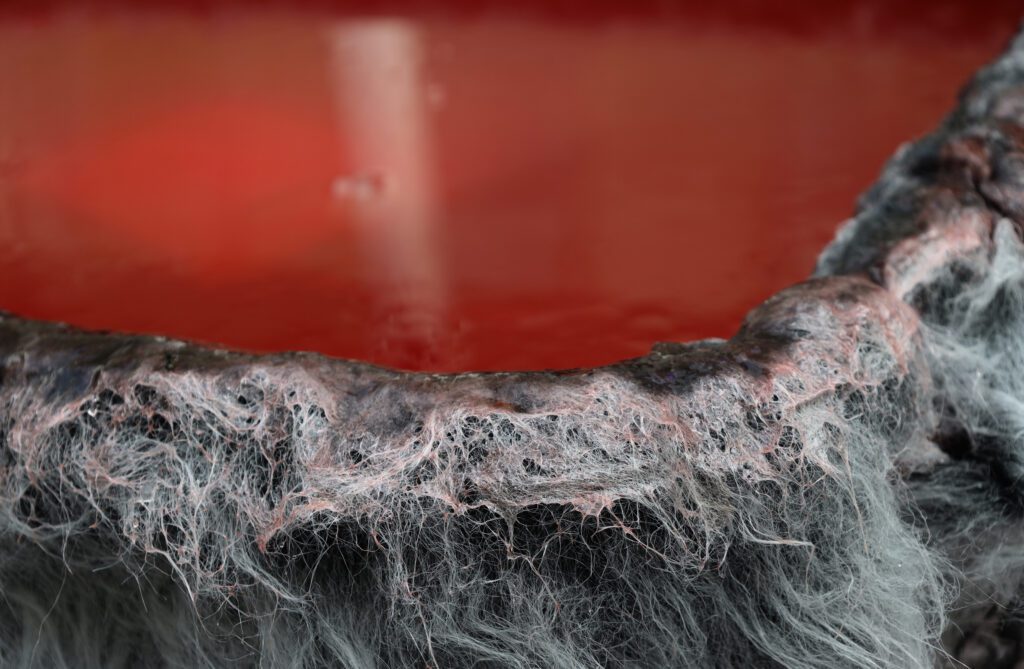
stereo version of the 4.1 soundtrack
Through a genderless voices soundtrack synchronized with water pumps, Secretion invites visitors to imagine the liquid as its own creature. Words initially understandable lose intelligibility and evolve as a slimy entity. The slime falling back from the pumps creates its own very soundscape unique to each cycle, and due to the very nature of water, spillage of it around the fountain is inevitable. It splashes the visitors, ends up on the floor, the fabric, or evaporates, reshaping the sculpture through time. Secretion act as a permanent exchange of molecules, an invitation to consider other scales of organisms, other realities, other materialities.
Grosz, E. Volatile Bodies : toward a Corporeal Feminism. Bloomington (Indiana University Press, 1994).
Neimanis, A. Bodies of Water: Posthuman Feminist Phenomenology. (London: Bloomsbury Academic, 2016).


Secretion was presented at the Menstrualities exhibition at Alte Munze, Berlin
Cybernetic Booth (2022)
Failure of the cybernetics
Sound installation in the frame of the exhibition Sprache im technischen Zeitalter at the TU & UdK Universitätsbibliothek in Berlin, a cooperation of UdK’s Sound Studies and Sonic Art Program with the TU Stage Design Master’s program, and the TU Litterature Studies program.
Design by Siwei Cai & Nikolai Korypaev . Sound by Salomé Lubczanski & Makoto Oshiro.
From the life and work of Walter Hollerer, tainted by a fascist history, emerged a concept of cybernetics. This concept, given the writer, explores the interactions between living organisms and machines, in interdisciplinary and complex systems. By exploring feedback loops and control mechanisms, cybernetics search to understand and improve the communication.
This cybernetic booth aims to interrogate the relevance of this concept. The installation reveals the power of machines and systems to obstruct and distort communication, leading to the impossibility of mutual understanding.


The cabin welcomes visitors with a cacophony of fragmented voices, falling silent when a newcomer picks up the phone receiver, as to premeditate the failure of the machine. Each press of the phone’s keypad is programmed to play a rendition of the Hollerer’s poem Der Fremde unserer Stadt (1958) in a different language. The text, subject to multiple translations in a feedback loop, loses its original meaning. The translation cycle defeats its own purpose and reveals a collection of nonsentences. As the sentences drift away from intelligibility, the listener is left only with the sonic and textural qualities of words. Here, the machine transitions to an obstacle to clear communication and mutual understanding.



All photo by © Christian Kielmann, www.herr-kielmann.de
The installation serves as a poignant reminder of the invisible dangers inherent in unchecked technological progress and the potential for manipulation and control. By subverting Hollerer’s utopian vision of cybernetics, the Cybernetic Booth prompts reflection on the complexities of human interaction and the ethical implications of technological advancement.
Thirsty (2022)
Multi-sonic window for a Mensch-made landscape.

The Klanglandschaften Festival is organised on the Holbrechter Riesenfelder, where used waters from Berlin were transported and cleaned from 1871 till 1985. Treated waters were initially re-used for local agricultural production but the growing industrialisation brought increasingly polluted waters. Today many heavy metals, anionic agents and hydrocarbons are laying invisible in the grounds, making it unsuitable for any agricultural work. In recent years, the fields have been reforested, reshaped, and repopulated. They serve now as a leisure park and research laboratory for landscaping and forest development.
To raise awareness on water pollution and human intervention on the landscape, Durstig is built as a sonic window which the visitor can look through, hear through and touch. It invites the listener to contemplate the human shaped nature while listening to the unseen. Each side of the window plays a different arrangement of underwater recordings and algorithmic composition based on the heavy metals present in the ground.
Durstig hangs from a maple tree next to a pond, planted especially to reduce the spread of polluted waters. Acting as a gatekeeper, the tree uses the neighbouring water for its growth and keeps it from streaming further.


video by © Jan Thoben
Thristy was installed at the Klanglandschaften Festival 2022 in the Holbrechtfelder, Brandenburg.
Hey Bitch ! (2021)
Vibrating chair to upcycle cat calling.

Following Henry Lefebvre’s ideas, urban space is not simply an inanimate place filled by people. It is conceived, perceived and lived, therefore dependent from social dynamics and political contexts. Who does the city belong to? Who is free to walk the streets? Today, city soundscapes feature endless street harassment. It targets physical bodies and resonates in mental spaces.
Hey bitch! invites the audience to sit down, re-appropriate their body and reflect on its place in the city.
The chair is made of recycled palette wood to integrates perfectly the urban space and transmits the deep vibrations to the listener’s body.
The soundtrack is composed of common verbal catcalling insults, such as “bitch”, “slut”, redesigned and recycled as a healing sonic massage. How does your body resonate to this? How do you reclaim your space?




Hey Bitch! was presented at The Sounds About 2022 exhibition at Zwitschermachine, Berlin
Trash Talk (2021)
Sonic shredder to celebrate the destruction of your administration paperwork.




Trash Talk was exhibited at The Sounds About 2022 exhibition in Zwitschermachine, Berlin
- Aucune catégorie
